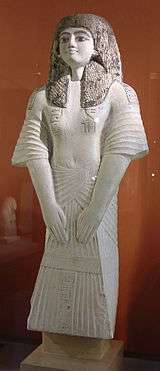Ramose (TT7)

The Ancient Egyptian artisan Ramose lived in Deir el-Medina on the west bank of the Nile, opposite Thebes, during the reigns of Ramesses II.[1] He was buried in a tomb in the village necropolis.
Ramose created a total of three tombs for himself in the Theban Necropolis, TT7, TT212 and TT250.[2]
His titles included Scribe in the Place of Truth, meaning that he worked on the excavation and decoration of nearby royal tombs.
Family
Ramose was the son of the retainer Amenemheb and the Lady Kakaia. Ramose was married to the Lady Mutemwia (Wia) who was the daughter of the royal scribe Huy and Nofretkau. They are not known to have had any children. Ramose is thought to have adopted the scribe Qenhirkhopshef so that the latter could inherit his estate. [3]
Career
Ramose started out training as a scribe at one of the Theban schools. According to a stela in the Bankes collection he served as Treasury chief in the House of Menkheperure, chief of the administration in the house of the superintendent of the seal, scribe who reckons the cattle of Amun-Ra, assistant-scribe of the correspondence of the hereditary prince. Cerny first posed the theory that the hereditary prince was the future Ramesses II, but later considered the possibility that the title referred to the famous Amenhotep Son of Hapu.[3]
An ostracon records the fact that Ramose was appointed as scribe in the Place of Truth in year 5, the 3rd month of Akhet, day 10 of the reign of Ramesses II. This appointment was likely made at the recommendation of the Vizier Paser who was responsible for all appointments in Deir el-Medina. Paser and Ramose would work together for many years and were responsible for installing a cult sanctuary - the khenu - for the living god at the sanctuary of Hathor. He was active until at least year 38.[3]